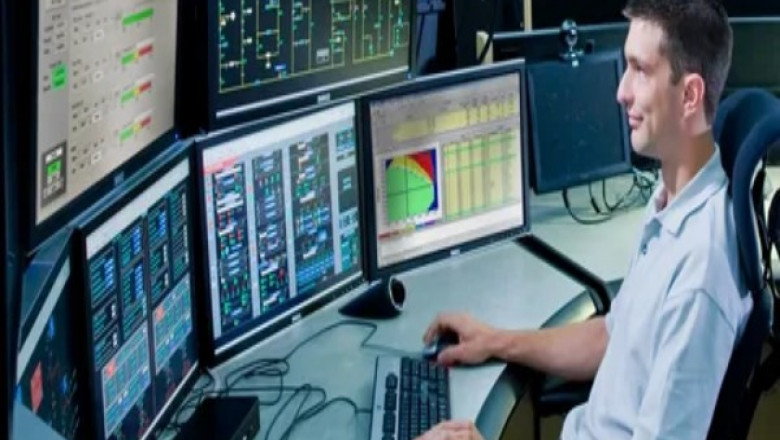views
Basics of Power Monitoring
Power monitoring involves tracking energy usage data from various equipment and appliances over time. This data is gathered using power meters which are connected to different electrical loads. Modern power meters can measure parameters like voltage, current, power factor, frequency and more. They send this real-time data to a central monitoring system software via wireless or wired network.
Power Monitoring System analyzes the data to provide useful insights into energy consumption patterns. It breaks down usage by individual loads or groups of loads. Time-based charts and graphs visually display energy usage trends over days, weeks or months. Key performance indicators highlight abnormal usage, idle times or periods of inefficiency. Alerts can be set up to notify maintenance staff of issues like overloads or power outages.
Reasons for Implementing Power Monitoring
The main objectives of power monitoring are energy cost optimization and facility management. Tracking power usage enables early detection of waste and inefficiencies. By pinpointing areas of excess consumption, corrective measures can be taken such as equipment servicing or process optimization. Unexpected additions to the load profile may indicate emerging issues that require prompt resolution.
Real-time monitoring aids energy cost savings by enabling load shedding during peak demand hours. Time-of-use tariff alerts notify about shifting to backup power sources off-peak. Historical data backing informs strategic procurement decisions for demand-side management schemes with the utility provider. Implementation of efficiency projects can be objectively evaluated based on monitored results.
Reliable power is critical for continuous operations in many industries. Distributed monitoring guards against downtime risks by surfacing abnormalities on switchgear, distribution panels or individual branch circuits. Maintenance teams get early warnings about overloads, loose connections and capacity bottlenecks requiring upgrades.
Components of a Power Monitoring System
A basic power monitoring system consists of three core components - power meters, a communication network and monitoring software.
Power meters are installed to measure key electrical parameters from all major loads. Advanced meters support integrated data logging and built-in networking capabilities. Current transformer split-core CTs clamp onto lines and accurate voltage sensors plug into sockets.
Wired or wireless infrastructure relays real-time data from meters to the central server. Common network types include modbus, BACnet, modbus tcp/ip and wireless options like Zigbee, WiFi etc. Gateways bridge incompatible systems.
Web-based monitoring software aggregates data, provides customizable Dashboards and analytical reporting tools. Alarms can be configured, scheduled reports emailed. Integration APIs enable third party systems access to data. Additional capabilities like demand forecasting, benchmarking and retrofit analysis are offered by specialized platforms.
Implementing a Power Monitoring Project
Here are the typical steps involved in implementing a power monitoring system:
1. Define project objectives and key performance indicators
2. Audit facility loads and existing metering infrastructure
3. size meters and networking hardware based on connection points and data throughput
4. Develop a roll-out plan and install metering equipment with minimal downtime
5. Commission the system, establish communications and verify accuracy
6. Configure monitoring software - users, alarms, report templates etc.
7. Conduct training workshops for operations and maintenance teams
8. Analyze initial baseline consumption patterns from historical data
9. Take corrective actions based on insights and routinely review reports
10. Expand system scope over time as processes, load profiles evolve
11. Continuously optimize through retrofits validated by monitoring results
With a structured approach, power monitoring pays for itself through accelerated energy savings within a couple of years of deployment.
Advanced Applications of Monitoring Data
While the basic usage involves manual analysis, integrating the monitored data more deeply unlocks its full potential. Advanced applications streamline facility functions:
- Automated demand response triggered by forecasted peaks reduces peaks charges.
- Fault detection algorithms pinpoint equipment issues before failures using pattern recognition.
- Digital twin simulations evaluate efficiency upgrades virtually before real retrofits.
- Automated data science models optimize processes like chilled water flows in real-time.
- Integrations with IoT platforms enable predictive maintenance via networked sensor correlations.
- Big data platforms power AI/ML applications for prescriptive recommendations.
- Blockchain supported microgrids autonomously coordinate local generation and storage.
The future of power monitoring lies in seamless coordination between real equipment data and virtual/digital simulations for autonomous energy management.
About Author:
Money Singh is a seasoned content writer with over four years of experience in the market research sector. Her expertise spans various industries, including food and beverages, biotechnology, chemical and materials, defense and aerospace, consumer goods, etc. (https://www.linkedin.com/in/money-singh-590844163)






















Comments
0 comment